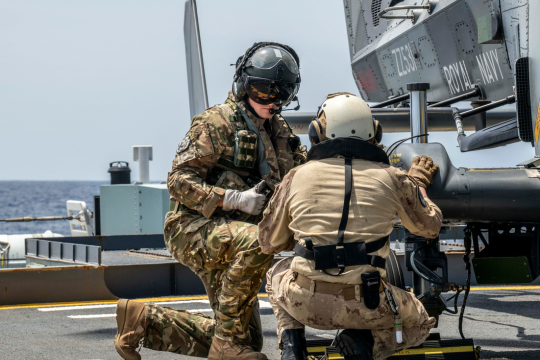
As Canada strengthens its military for the future, it cannot forget those who have already served. Photo: Cpl. Brendan Gamache
Pride in service is a defining part of what it means to be Canadian. Its citizens’ freedoms, way of life and reputation around the globe have all been shaped and protected by the people in uniform who serve, and who have served. That pride runs especially deeply in the many communities that are home to military and veteran families.
This spring, Prime Minister Mark Carney announced his commitment to bring Canada’s defence spending to two per cent by the end of the fiscal year — a full five years ahead of schedule. This $9 billion in additional annual investment supports increased pay for forces personnel, modernizes military capabilities and procures new assets, including submarines and weapons, that Canada needs to meet today’s global security challenges.
And in June, the prime minister further increased Canada’s NATO commitments to five per cent of GDP by 2035.
But even as Canada strengthens its military for the future and commits to contributing to NATO’s mission, it cannot forget those who have already served. The defence spending announced will modernize equipment and technology, shore up Canada’s defence industry and establish partnerships, but these investments won’t work without the people behind the Canadian Armed Forces. And as the country plans to grow the Armed Forces to 71,500 regular members by 2030, it must commit the necessary resources for the entire lifecycle of service for those new recruits, including their release from service and transition to life as veterans.
Veterans continue to face overwhelming challenges. Nearly half live with at least one disability, such as chronic pain, mental-health conditions and operational stress injuries. Yet, veterans often wait months for decisions on disability claims. Despite signs of progress in recent years, wait times have been the top complaint to the Office of the Veterans Ombud, with many veterans continuing to face real hardship, including delayed treatment, financial strain and a declining quality of life.
The National Association of Federal Retirees, representing more than 60,000 Canadian Armed Forces veterans and their families, is calling for immediate action. This country needs accessible, timely and co-ordinated healthcare for veterans. It needs full implementation of the recommendations from Invisible No More: The Experiences of Canadian Women Veterans to guarantee equitable support. And it needs improved transition services to support sucessful release.
The federal government has signalled its intention to modernize the veterans benefits system — a plan that is welcome, but that will require decisive action, sustained investment and clear timelines.
Good intentions must be matched by concrete outcomes.
Canada’s national defence strategy must include a strong, well-resourced system for veterans and their families — one that is equitable, inclusive and reflective of the diverse faces of modern service, while also remedying systemic problems that have created lasting challenges for veterans. Recruitment and retention in the Forces — and our defences — depend upon it.
As Canada’s military spending commitments increase, so too must our investment in the well-being of those who have served. Supporting veterans must not be an afterthought to defence policy.

